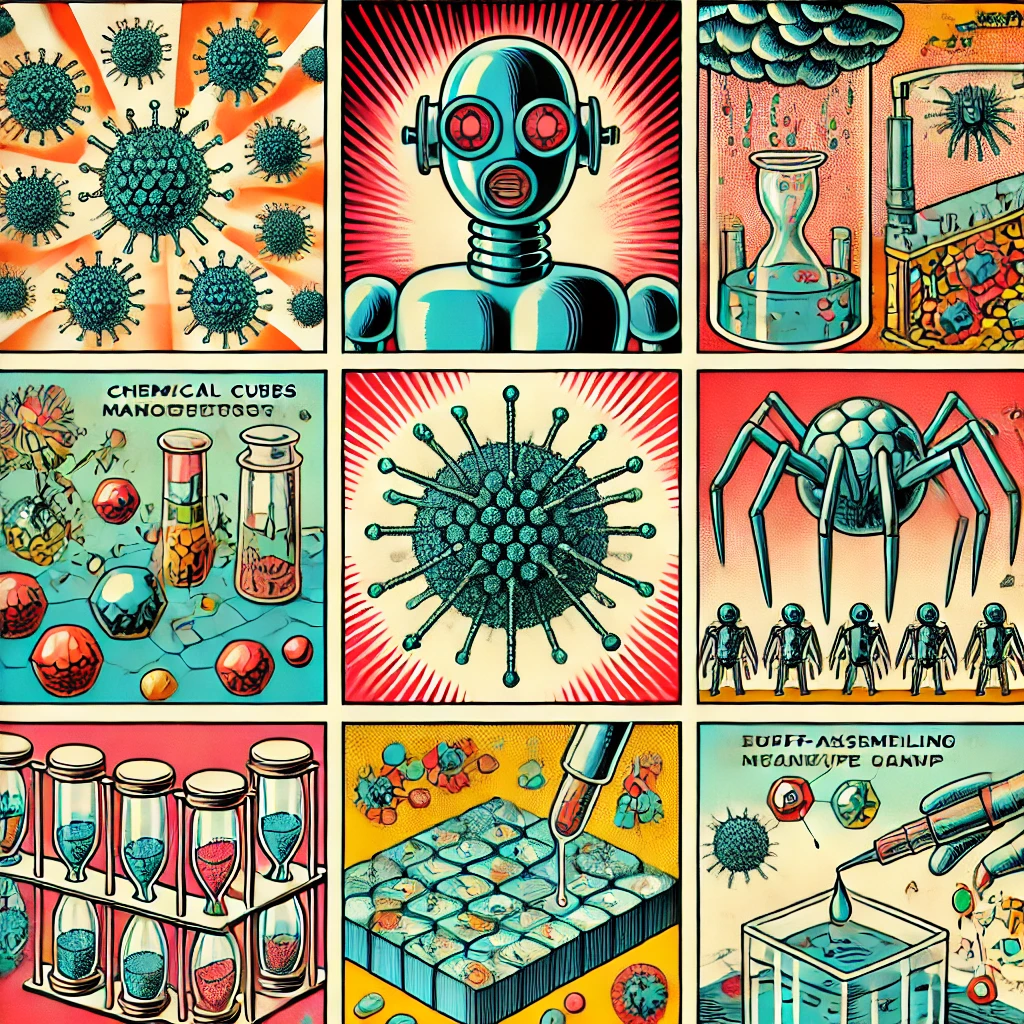How Nanobots Know What To Do Siemens Patent From 2011 Uses Self Assembly Nanorobots
https://anamihalceamdphd.substack.com/p/how-do-nanobots-know-what-to-do-siemens
How Nanobots Know What to Do: Siemens’ 2011 Patent on Self-Assembly Nanorobots
In the realm of cutting-edge technology, few concepts captivate the imagination quite like nanobots. These microscopic machines hold the promise of revolutionizing fields as diverse as medicine, manufacturing, and environmental science. But a crucial question often arises: how do these tiny robots know what to do? The answer lies in groundbreaking research and patents, such as Siemens’ 2011 patent on self-assembling nanorobots.
The Core of the Patent
Siemens’ 2011 patent focuses on nanorobots capable of self-assembly and collective behavior. These nanobots are not pre-assembled, but rather, they consist of individual components designed to organize themselves into functional units once they’re in the right environment. This approach draws inspiration from nature, where molecules and cells exhibit self-organization to create complex structures and systems.
The patent outlines a system in which nanorobots communicate and coordinate their actions using advanced algorithms. These algorithms enable them to detect their surroundings, interact with other nanobots, and adapt to changing conditions. This coordination allows the bots to perform complex tasks as a cohesive group, despite their individual simplicity.
How Self-Assembly Works
Self-assembly in nanorobots involves a combination of physical and chemical processes:
- Chemical Interactions: The nanobots use chemical cues to identify their location and orientation. These cues might include pH levels, ionic concentrations, or other environmental markers.
- Magnetic or Electric Fields: In some cases, external fields are used to guide the assembly process. The nanobots’ components are engineered to align and connect under specific field conditions.
- Programmable Surface Interactions: The surfaces of the nanobot components are designed with specific patterns or receptors that bind only to their intended counterparts, ensuring that the assembly process is precise.
- Feedback Loops: The system includes feedback mechanisms that allow the nanobots to correct errors during assembly, ensuring reliability and efficiency.
Applications and Implications
The potential applications of this technology are staggering:
- Medicine: Self-assembling nanorobots could revolutionize targeted drug delivery, enabling treatments to reach specific cells or tissues while minimizing side effects. They could also assist in precision surgery or the repair of damaged tissues at the cellular level.
- Environmental Cleanup: These bots could be deployed to remove pollutants from water, air, or soil, assembling into specialized structures to neutralize hazardous materials.
- Manufacturing: In advanced manufacturing, nanobots could assemble complex products atom by atom, achieving levels of precision that are impossible with traditional methods.
The Challenges Ahead
While the promise of self-assembling nanorobots is exciting, significant challenges remain:
- Energy Efficiency: Powering nanobots on such a small scale is a major hurdle. Researchers are exploring innovative energy sources, such as harvesting energy from the surrounding environment.
- Control and Coordination: Ensuring that millions or billions of nanobots work together seamlessly is a daunting task. Advances in artificial intelligence and swarm robotics are helping to address this challenge.
- Ethical Concerns: As with any powerful technology, the potential for misuse exists. Rigorous ethical guidelines and regulatory frameworks will be essential to ensure that nanobots are used responsibly.
Siemens’ Vision for the Future
Siemens’ 2011 patent laid the groundwork for future innovations in nanotechnology. By addressing the fundamental challenge of self-assembly, this patent represents a significant step toward realizing the full potential of nanobots. As research continues to build on this foundation, we can expect to see breakthroughs that transform industries and improve lives around the globe.
Conclusion
The question of how nanobots know what to do is both fascinating and complex. Siemens’ 2011 patent offers a glimpse into the mechanisms that make self-assembling nanorobots possible. By leveraging principles of chemistry, physics, and advanced algorithms, these tiny machines are poised to reshape our world in profound ways. The future of nanotechnology is bright, and Siemens’ vision is helping to light the way.
